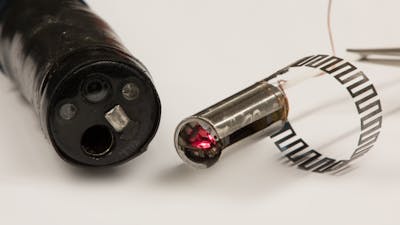Endoscopy has proven extremely useful in many areas of medicine because it can be carried out with relatively few risks in a short time, and be used to diagnose and treat numerous diseases. In gastroenterology, endoscopies of the upper gastrointestinal tract (esophagus, stomach, first part of the small intestine; upper GI endoscopies) and lower gastrointestinal tract (small intestine, large intestine or colon; lower GI endoscopies) are the most often performed procedures and used by doctors to investigate and treat the causes of stomach pain, ulcers and gastritis, digestive tract bleeding, and changing bowel habits (chronic constipation and diarrhea), as well as assess the presence and malignant state of polyps. In the United States alone, an estimated 17 million lower GI endoscopies and about the same number of upper GI endoscopies are performed each year.
Surgical Limitations
Minimally invasive procedures in the GI tract are conducted by surgeons with flexible surgical endoscopes that provide high-quality visualization of tissues in difficult-to-reach spaces in the body, and the principle ability to perform interventions such as resections and coagulations. Currently used endoscopes are designed as electrosurgical devices that generate heat with the help of an oscillating radiofrequency (radiofrequency (RF) diathermy) to cut through tissues. However, RF diathermy often does not allow the desired precision, can cause collateral tissue injury and unintentional burns, and at a certain frequency generates smoke and fires during surgeries. Lasers, in contrast, are being used safely and effectively in many highly-precise surgical applications, such as in ophthalmology and plastic surgery but, until now, have not been integrated with flexible surgical endoscopes for minimally invasive gastrointestinal surgeries. This is due to the inability to precisely and rapidly position their tissue-cutting beams, which presents a particular challenge for small devices that need to operate in small spaces.
A Microrobotic Solution

Wyss Institute robotic engineers, with continuous end-user feedback from surgeons in different medical areas, have developed a compact, easy-to-control, high precision laser-steering microrobotic end-effector. Attached to the end of a minimally invasive flexible surgical endoscope, the device, which merely measures 6 mm in diameter and 16 mm in length, provides the ability to carefully steer a surgical laser at high speed, minimizing damage to surrounding tissue, and producing higher incision quality than existing surgical tools. Due to breakthroughs in millimeter-scale mechanical design and fabrication, it has the ability to “see around corners,” allowing surgeons to access previously inaccessible lesions and areas of the GI tract.
To focus and position its laser beam, the compact teleoperated device uses piezoelectric bending actuators that, with the help of flexure-based linkages, rotate two independent mirrors, and off-the-shelf optical components to focus a fiber-coupled laser beam. In a miniaturized process, it is fabricated and assembled with a combination of traditional machining and laminate-based pop-up manufacturing techniques that can be easily customized to specific surgical requirements, scaled to mass production, and integrated with flexible endoscopes.
The laser-steering end-effector’s high-precision, fast handling, and ease of assembly have the potential to enhance and enable a range of medical endoscopic procedures, while reducing risks to patients and costs to the healthcare system.
In addition to enhancing minimally invasive surgeries performed in the lower and upper gastrointestinal tract, the laser-steering accessory, according to consulted clinicians from different surgical areas, also has potential to improve specific eye, nose, and throat (ENT) procedures, and laparoscopic procedures (keyhole surgeries) in which an endoscope is inserted into the body via a small incision in the abdominal wall.
This medical technology is available for partnership and licensing opportunities.
